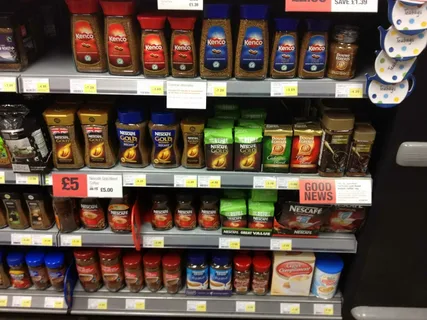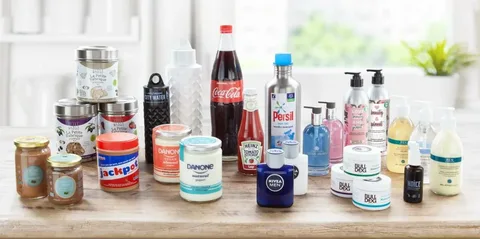Packaging is a silent ambassador for any product, playing a critical role in protection, convenience, and brand identity. Among the various packaging
Packaging is a silent ambassador for any product, playing a critical role in protection, convenience, and brand identity. Among the various packaging types, tubed packaged goods are a versatile and widely used format that has transformed the way consumers interact with a range of products. From everyday toothpaste tubes to specialized pharmaceutical ointments, tubes offer a unique blend of practicality and user-friendliness.
This article offers an in-depth look at tubed packaged goods — their benefits, materials, applications, latest trends, and challenges — followed by a comprehensive FAQ section.
What Are Tubed Packaged Goods?
Tubed packaged goods consist of products contained within tubular packaging, which is typically a hollow, cylindrical container made from flexible or semi-rigid materials such as plastic, aluminum, or laminates. Designed to be squeezed, these tubes allow controlled dispensing of contents, which are usually viscous, paste-like, or semi-solid.
The tube’s construction usually includes a sealed bottom, a dispensing nozzle, and a cap or closure system. This packaging style is highly versatile, accommodating a wide range of products across many industries.
Key Benefits of Tubed Packaging
1. Controlled and Hygienic Dispensing
Tubed packaging allows consumers to dispense precise amounts of product with a simple squeeze, reducing waste and maintaining hygiene by limiting direct contact with the remaining contents.
2. Portability and Convenience
The lightweight and compact nature of tubes make them travel-friendly. Their flexible shape adapts to various sizes, including convenient travel or sample sizes.
3. Protection from External Factors
Tubes safeguard products from air, moisture, and contamination, which is critical for sensitive products like cosmetics and pharmaceuticals.
4. Cost-Effective Manufacturing and Distribution
Compared to rigid packaging, tubes are cheaper to produce, lighter to transport, and take up less shelf and storage space.
5. Design Flexibility and Branding
Tubes can be printed with vibrant graphics and finishes, allowing brands to creatively express identity and attract consumers.

Materials Used in Tubed Packaging
Plastic Tubes
Primarily made from polyethylene (PE) or polypropylene (PP), plastic tubes are flexible, durable, and cost-effective. They are common in cosmetics, food, and personal care products.
Aluminum Tubes
Aluminum tubes offer superior protection against light, oxygen, and moisture, making them suitable for pharmaceuticals and high-value cosmetic products. Their rigid structure and metallic finish also convey premium quality.
Laminated Tubes
These are multi-layer tubes combining plastic and aluminum foil layers for optimal barrier properties and printability. They balance flexibility with product protection and are prevalent in cosmetics and pharmaceuticals.
Applications of Tubed Packaged Goods
Cosmetics and Skincare
Products like face creams, sunscreens, moisturizers, and gels use tubes for easy, hygienic application and portability.
Food and Condiments
Items such as ketchup, mayonnaise, mustard, honey, and bakery gels are commonly sold in tubes to allow precise and mess-free dispensing.
Pharmaceuticals
Topical treatments, ointments, gels, and creams packaged in tubes maintain sterility and dosage accuracy while protecting active ingredients.
Industrial Products
Adhesives, sealants, and other viscous materials use tubes for controlled application and to minimize waste and contamination.
Emerging Trends in Tubed Packaging
Sustainability
Eco-conscious consumers and regulations are pushing brands to adopt recyclable, biodegradable, and refillable tubes. Mono-material tubes and innovations in compostable plastics are gaining traction.
Smart and Functional Design
Innovations such as airless tubes, tamper-evident seals, ergonomic shapes, and easy-open caps are improving user experience and product preservation.
Customization and Differentiation
Brands focus on unique shapes, tactile finishes, and advanced printing techniques to make their products stand out on crowded shelves.
Challenges in Tubed Packaging
- Recycling Complexities: Multi-layer laminates present recycling difficulties, though advances are being made.
- Material Compatibility: Certain product formulas may require special tube linings to prevent degradation or chemical reactions.
- Manufacturing Costs: High-barrier materials and intricate printing can increase production expenses.
Frequently Asked Questions (FAQs)
Q1: What products are most suitable for tubed packaging?
A: Products with semi-solid or viscous consistencies, such as creams, gels, ointments, pastes, and certain food condiments, benefit most from tubed packaging.
Q2: Are tubed packages recyclable?
A: Tubes made of single plastics or aluminum are recyclable where facilities exist. Laminated tubes are more challenging to recycle, but mono-material tubes are improving sustainability.
Q3: How does tubed packaging preserve product freshness?
A: Tubes protect contents from air, moisture, and contaminants, reducing oxidation and microbial growth, which helps maintain product quality.
Q4: Can tubes be resealed after opening?
A: Yes. Most tubes feature screw caps, flip-tops, or snap closures that enable resealing and maintain product integrity.
Q5: Are aluminum tubes better than plastic?
A: Aluminum tubes offer superior barrier protection and a premium feel but are less flexible and typically cost more. Plastic tubes are lightweight, flexible, and cost-effective.
Q6: How can I dispose of a tube properly?
A: Ideally, squeeze out remaining product and check local recycling guidelines. Plastic and aluminum tubes may be recycled, but multi-layer tubes often need to be disposed of as waste unless special recycling is available.
Q7: What innovations are emerging in tubed packaging?
A: Key innovations include recyclable mono-material tubes, airless dispensing systems, refillable designs, and tamper-evident features to enhance sustainability and user experience.
Conclusion
Tubed packaged goods offer a winning combination of convenience, protection, and cost efficiency that benefits both manufacturers and consumers. Their adaptability across industries, from cosmetics to pharmaceuticals and food, highlights their importance in modern packaging.
As the demand for sustainable and user-friendly packaging grows, tubed packaging continues to evolve through material innovation and smart design. This ensures tubes remain a relevant, practical, and attractive option in the packaging landscape, helping brands meet both consumer expectations and environmental responsibilities.
Whether you’re squeezing out toothpaste, applying skincare, or decorating a cake, tubed packaged goods make daily tasks simpler, cleaner, and more efficient — a small packaging solution with a big impact.
Must Visit: quickcashhub

COMMENTS